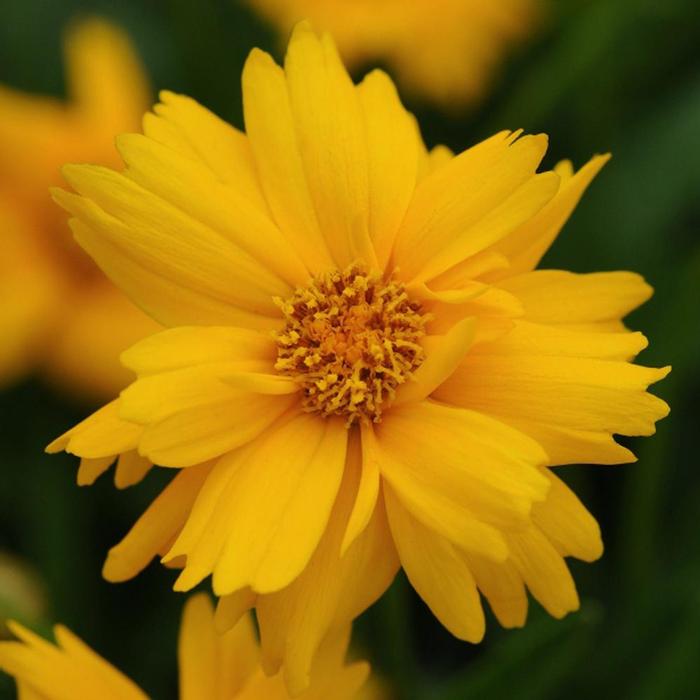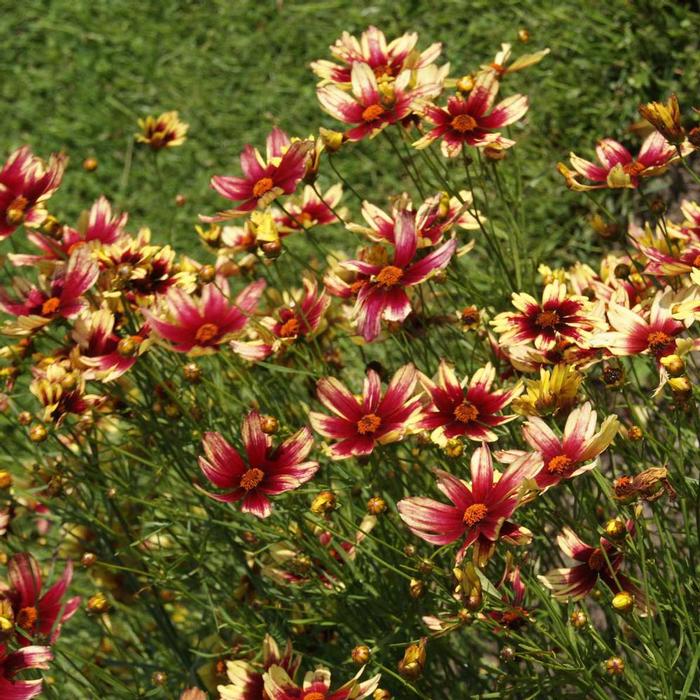
PLAN FOR SUCCESS
Coreopsis may be started from seed or you may purchase nursery-grown plants. Longfield Gardens provides nursery-grown plants that usually bloom within a few months after planting.
SUN AND SHADE: Coreopsis grow best in full sun. The plants may also be grown in part shade, but will not bloom as prolifically. They tolerate hot sun and high temperatures.
SOIL CONDITIONS: Coreopsis prefer well drained soil and don't mind if it's stony and low in nutrients. In some parts of the country, the plants can be found growing in open meadows or along the side of a road.
HARDINESS: Both of the native species, Coreopsis grandiflora and Coreopsis verticillata, are winter hardy in growing zones 4-9. Some cultivars are also hardy in zones 4-9 include 'Zagreg', 'Moonbeam', 'Sun Up' and 'Presto.'
Many of the newer Coreopsis cultivars are less hardy and may not survive winters in zones 4-6. In these colder areas, the plants are typically grown as annuals.

HOW TO GROW COREOPSIS
Coreopsis grandiflora and Coreopsis verticillata are native to North America and have yellow or gold flowers. The foliage of coreopsis grandiflora is deeply-lobed and lance-like. Coreopsis verticillata has fine, lacy foliage and is often referred to as threadleaf coreopsis. Both have a mounding growth habit and reach a height of 1 to 2 feet.
In recent years, breeders have introduced many new cultivars of coreopsis with flower colors that include pink, white, peach, red and burgundy, as well as attractive bicolors. These new options include 'Satin and Lace Red Chiffon', 'Lil Bang Enchanted Eve', 'Limerock Ruby', 'Cherry Pie' and 'Mango Punch.'
Bees and butterflies are attracted to coreopsis during the summer, and birds love to snack on the seed heads during fall and winter. Deer generally don’t bother coreopsis

WHAT TO EXPECT
Coreopsis typically bloom in early summer and then flower on and off until frost. To encourage reblooming, snip off the spent flower heads or simply shear back the entire plant after the first flowering.
Both coreopsis grandiflora and coreopsis verticillata spread by rhizomes and are also self-seeding.
In areas where coreopsis is perennial, the plants may need to be divided or replaced every 3 to 5 years.


